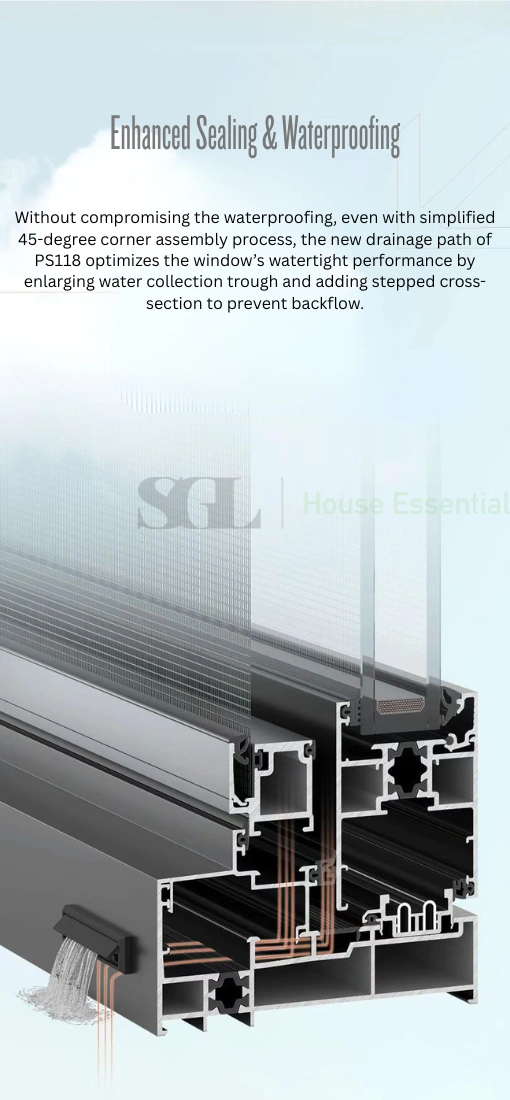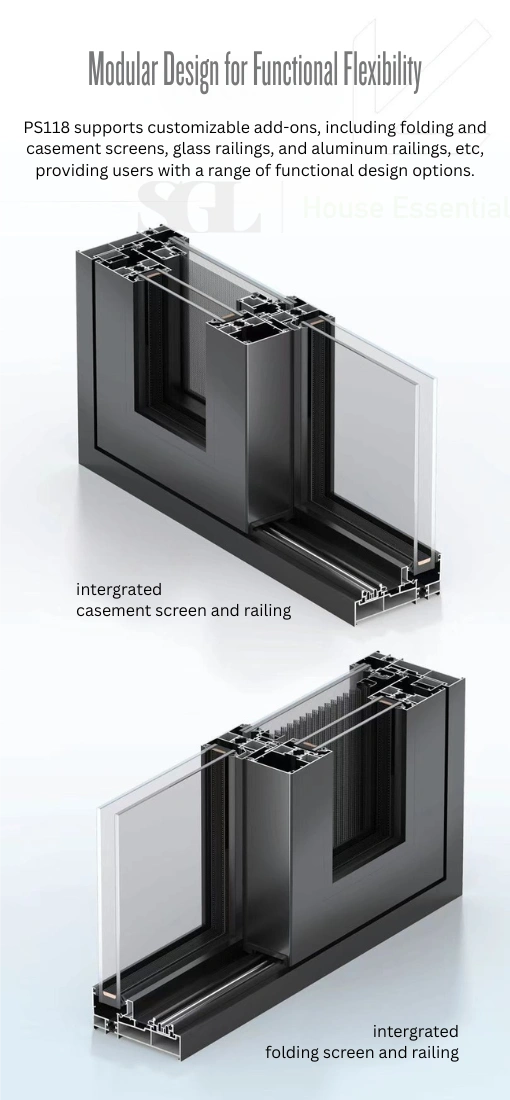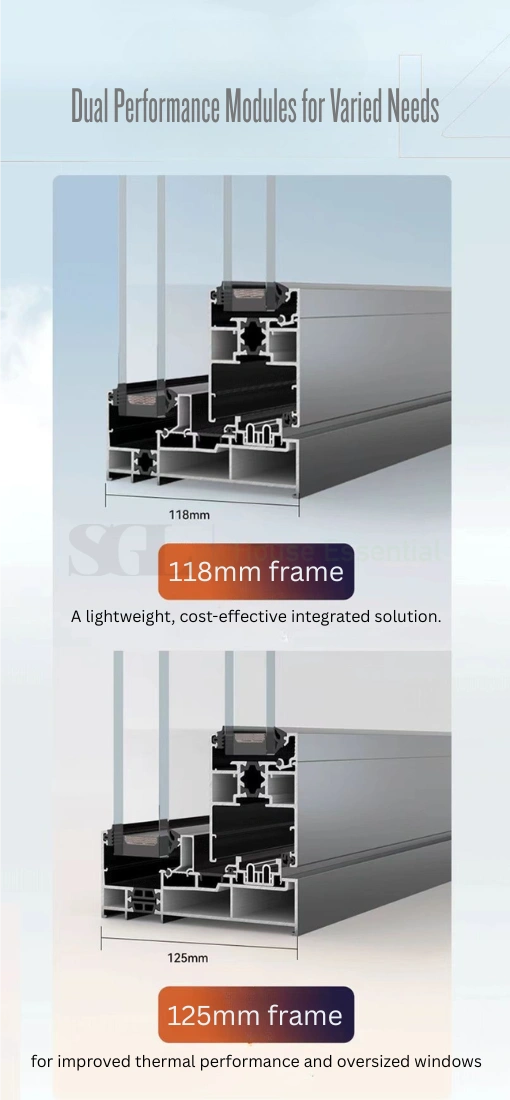Why Modern Side-Pressed Windows Are Evolving
The demand for aluminum windows has shifted toward sleeker aesthetics, better performance, and smarter engineering. Among these innovations, the side-pressed windows stand out—combining minimalist design with enhanced functionality.
1. Ultra-Slim Frames for Maximum Views
Traditional window frames often obstruct visibility, but the latest aluminum side-pressed window designs feature 70mm hook-edge profiles, reducing visual clutter while maintaining structural strength.
Benefit: Expansive views, ideal for modern residential and commercial spaces.
Keyword Integration: The side-pressed window’s narrow form factor complements floor-to-ceiling glass installations.

2. Reinforced Locking & Sealing
A common flaw in sliding or casement windows is air/water leakage. The new hook-edge lock system addresses this by:
Adding anti-collision gaskets to protect hardware.
Improving compression sealing when closed.
Result: Better weather resistance for aluminum side-pressed windows in extreme climates.

3. Smarter Water Drainage
Many aluminum windows fail at 45-degree joint sealing, but the PS118 side-pressed window introduces:
Multi-stage drainage channels to redirect water.
Stepped barriers to prevent backflow during heavy rain.
Application: Critical for high-rise buildings and coastal areas.
4. Customizable Performance
Not all aluminum windows serve the same purpose. The PS118 side-pressed windows offer:
118mm frames (budget-friendly, standard insulation).
125mm frames (superior thermal break for energy efficiency).
Why it matters: Architects can specify side-pressed windows for both cost-sensitive and high-performance projects.

5. Modular Add-Ons for Versatility
Beyond basic functionality, modern aluminum side-pressed windows support:
Retractable screens (for ventilation without pests).
Integrated railings (safety without compromising design).
Keyword Tie-In: The side-pressed window’s adaptability makes it ideal for smart homes.

The future of aluminum windows lies in precision engineering—thinner frames, stronger seals, and modular upgrades. The side-pressed windows exemplify this trend, merging form, function, and flexibility for next-generation buildings.